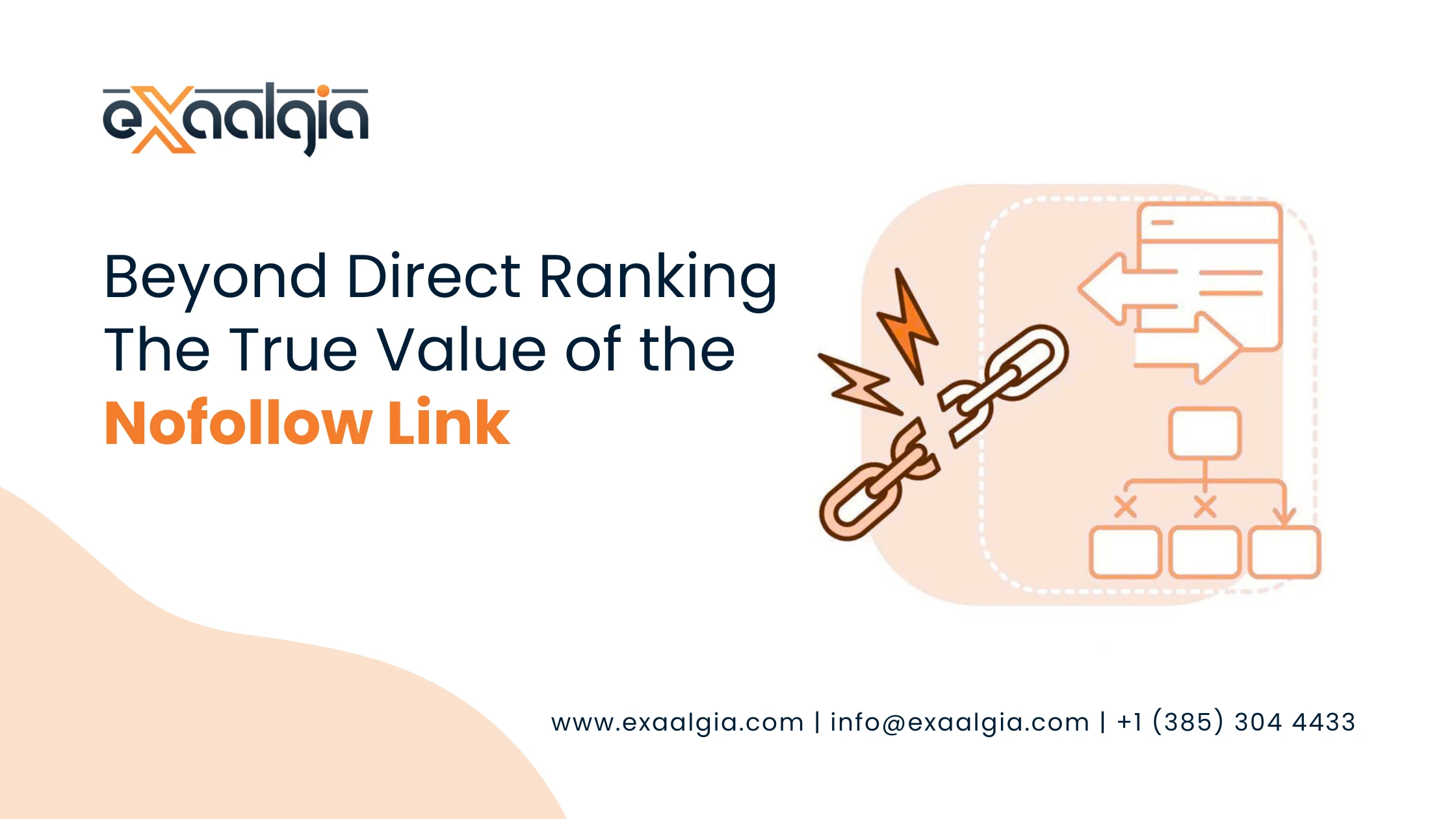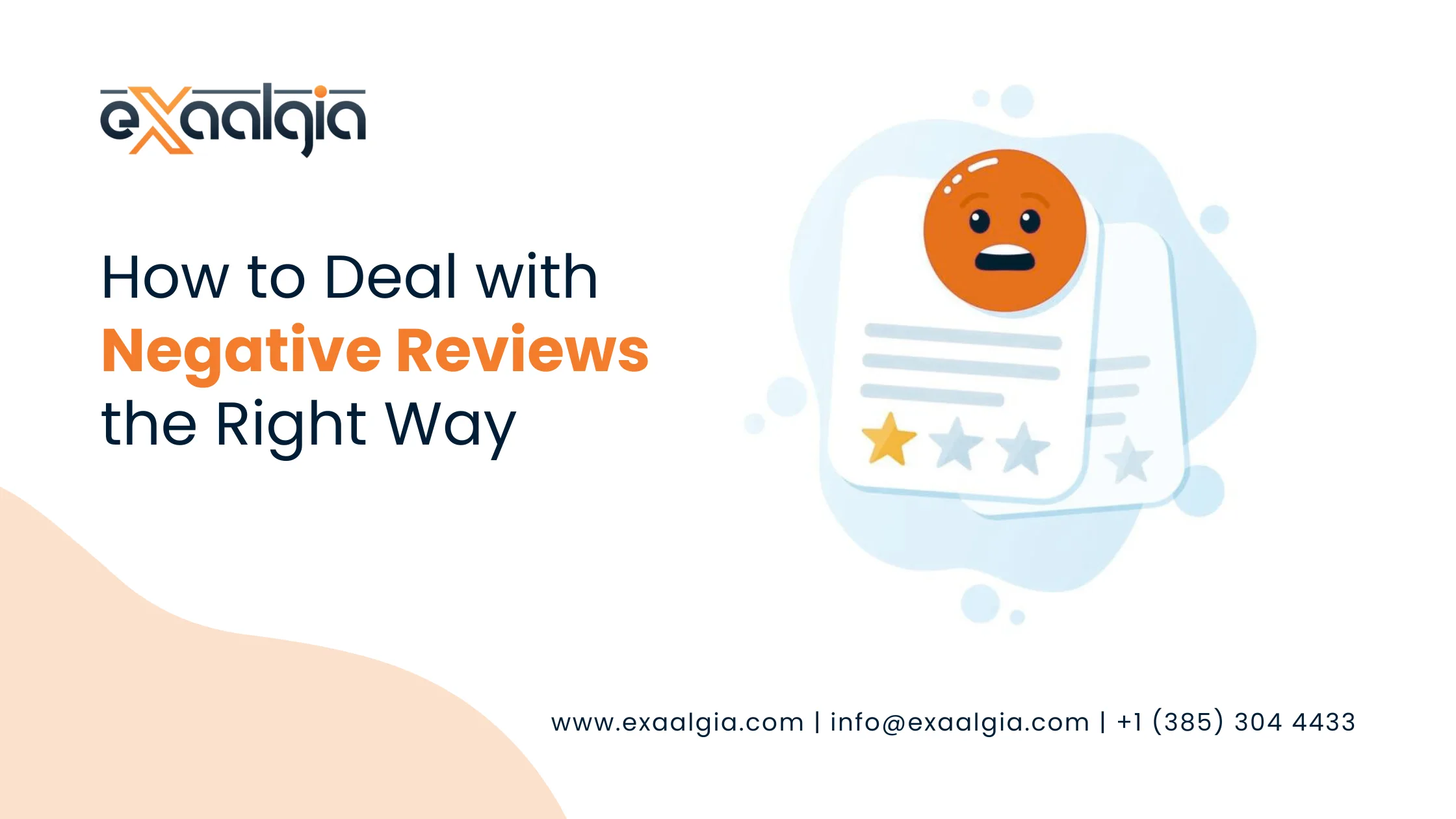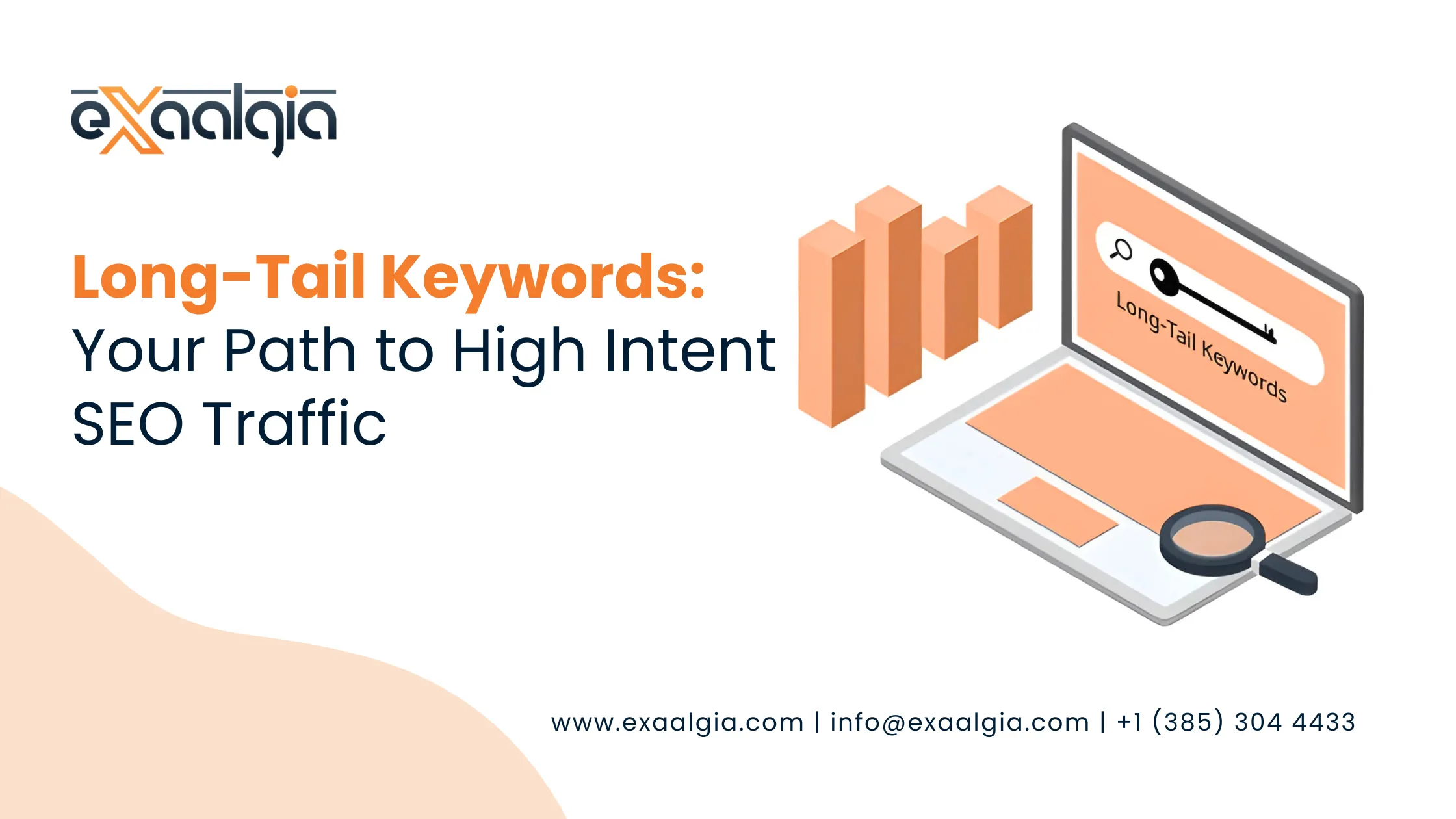In a way, not all links are equal. The succinct answer is an emphatic “no”.
Linking can be further classified into two broad types: dofollow links and nofollow links.
Dofollow links represent the ideal scenario in SEO practices as they transfer pagerank and eventually contribute to your site’s ranking chances. On the other hand, nofollow links are designed to instruct search engines’ bots (crawlers) to ignore the link and not transfer any ranking/goodness.
This guide of nofollow will take you through the whole process of understanding nofollow links:
their definition, the reasons why they were implemented, the places where they can be found and, most importantly, their role in your up to date SEO strategy.
What Is a Nofollow Link?
A nofollow link is an associated link that has a certain HTML attribute, rel=”nofollow”, attached to it.
This means for Google and other search engine robots it is like a traffic sign stating:
Do not ‘follow’ this link. (i.e., no crawling of the linked page based on this link.)
Do not ‘count’ this link. (i.e., don’t consider this link as a factor in the ranking, although Google’s position has changed which we will explain later.)
Once a link is marked as nofollow it mostly does not pass any link juice (SEO value) to the referred website.
This is how it appears in the HTML code:
<a href=”https://example.com” rel=”nofollow”>Example Website</a>
The main purpose of using the nofollow attribute is to prevent spam links or paid links from inflating a website’s search rankings artificially that were not earned organically.
Nofollow vs. Dofollow: The Key Difference
In practice, there is no difference between the two that a user could notice, you can click on both. Nevertheless, from the SEO perspective, the difference is enormous:
| Feature | Dofollow Link | Nofollow Link |
| Link Authority/PageRank | Passes value (often called “Link Juice”) | Generally does not pass value (treated as a hint) |
| Impact on SEO Ranking | Directly helps rankings | Helps indirectly (traffic, link discovery) |
| HTML Attribute | No specific attribute (it is the default) | Includes the rel=”nofollow” attribute |
| Intended Use | Editorially approved, trusted sources | Paid Links, Blog Comment Spam, UGC, etc. |
Your link building activity has acquiring dofollow links as your topmost priority, for they are the links that directly improve your link authority and push you up in the SERPs.
The Origin Story: Why Was the Nofollow Tag Created?
The nofollow tag came into existence in 2005 when Google partnered with Yahoo! and Microsoft. The main reason for its inception was to fight the enormous spam issue in blog comments.
Blogging became a trend and spammers took it as an opportunity, thus leaving thousands of automated comments containing links back to their sites. Since links were dofollow by default, spam sites were actually gaining good link authority and even ranking up in Google.
This situation made the search results less quality and pushed out high-quality, legitimate sites.
The nofollow tag was the solution to this problem. As soon as the nofollow attribute was set as the default for blog comments, spammers lost the SEO benefit from the links they dropped this blog comment spam eventually came to an end.
Where Are Nofollow Links Usually Located?
According to Google’s Webmaster Guidelines and web conventions, just certain kinds of links need to be nofollow or should use the newer, more specific attributes.
1. Paid Links and Advertisements
If a link (like a banner ad or sponsored post) is sold to you, it is a must that you disclose this relationship in the eyes of Google. Thus, paid links must be tagged with either rel=”sponsored” or the older rel=”nofollow” attribute. Not doing so could result in a Google penalty for getting involved in link schemes.
2. User-Generated Content (UGC)
UGC is any content generated by users instead of the website editor, including blog comments, forums, and guest book contributions, among others. To discourage spammers from getting a benefit out of these areas, links should be marked with the rel=”ugc” (User Generated Content) attribute, or rel=”nofollow” option. This notifies Google that the link was generated by an unqualified third party.
3. Social Media Platforms
Most major social media networks (e.g., Facebook, X which is previously known as Twitter, LinkedIn, and YouTube) assign Nofollow attribute to all external links in profiles or posts.
4. Untrusted or Low-Quality Sites
As a site owner, if you link to a source that you don’t fully trust or one that you don’t want to endorse, you should apply the nofollow tag so that your link authority is not passed to that site.
Do Nofollow Links Help With SEO? (The Evolving Stance)
Google’s position was unchanged for several years: “Generally, we keep away from them.”
Nevertheless, in the year 2019, Google revealed a major shift in policy: along with the newer sponsored and ugc attributes, the nofollow attribute was to be treated as a hint instead of a command.
What does “Hint” signify?
To say that Google may or may not follow the link and use it for indexing or ranking purposes accordingly is very much like if they think it is worth the trouble, even when the nofollow attribute is in place.
Most SEO experts still think that nofollow links are indirect to any degree but do contribute to a good SEO strategy and thus do not pass the same direct ranking power as dofollow links anyways.
Here’s how nofollow links play an indirect but important role in your SEO strategy:
1. Bringing in Quality Referral Traffic
The perfect nofollow link, even if it has no SEO value, can still bring targeted visitors numbering in thousands to your website. A link for instance from a serious news outlet (which frequently nofollows external links) can result in a very large influx of customers or readers. Quality traffic is one of the most important factors for SEO success.
2. Making a Natural Link Profile
If all of your backlinks are dofollow, then your link profile appears to be unnatural and may even alert Google. A natural link profile which is healthy and strong consists of both dofollow and nofollow links in appropriate ratios. Huge sites like Wikipedia or YouTube can be taken as examples, and a big percentage of their incoming links are nofollow.
3. The Way to Dofollow Links (Link Discovery)
A nofollow link from a very noticeable site can be a trigger for getting dofollow links in the future. If a well received article links to you (even if it is nofollowed), it makes your presence more substantial. Other bloggers, journalists, and webmasters who come across that article might then find your content and reference it on their sites through dofollow links.
4. Anchor Text Contribution (Potential)
Although Google may not get much link juice from the nofollow link, some research indicates that Google still takes into account the anchor text of the nofollow link in order to have a better understanding of the linked page’s content.
The New Nofollow Attributes: Sponsored and UGC
With the 2019 update, Google introduced two new rel attributes to give site owners more context regarding the nature of the link:
1. rel=”sponsored”
This attribute is for links that are advertisements, paid placements, or compensation-based. Marking paid links this way is now the preferred method.
2. rel=”ugc”
This attribute should be assigned to user-generated content links such as comments and forum posts, where the content is not editorially controlled by the site owner.
These attributes are, however, considered the preferred ones, and Google has stated that if your site’s technology doesn’t support the newer attributes, you can still use rel=”nofollow” for both sponsored and UGC links.
Nofollow vs. Noindex: A Common Point of Confusion
It is very common that people get nofollow and noindex mixed up, but they are completely different things and serve different purposes:
| Feature | Nofollow | Noindex |
| What it does | Instructs search engines not to follow a specific link. | Instructs search engines not to add a specific page to their index. |
| Where applied | As an attribute within the <a> (link) tag. | As a meta tag within the page’s <head> section. |
| Purpose | To prevent link authority from passing. | To exclude the page from showing up in search results. |
To stop a page from being indexed and listed in the Google search results, the noindex tag has to be employed in such a manner that a nofollow link is not just enough.
Using Nofollow Links on Your Site – Best Practices
As a website manager, you surely need to be thoughtful about when it comes to the nofollow attributes usage on external links:
- Editorial Links: If you are linking out to a trusted and reputable source that you want to endorse and are convinced the link is, use a dofollow link (i.e., no attribute attached).
- Affiliate or Paid Links: In the cases when you have an affiliate link or you have received a compensation link, you should use rel=”sponsored” or rel=”nofollow” to comply with Google guidelines.
- Untrusted or Spam-Prone Links: Use rel=”ugc” or rel=”nofollow” for any links generated by users (comments, forum profiles) or links to untrusted sources.
You are being facilitated with the process by WordPress and other modern CMS that automatically assign the proper nofollow/UGC attributes to comment links for you.
Protecting Your SEO: A Final Word on the Nofollow Tag
The nofollow link attribute has been a major player in maintaining the integrity of search results by fighting spam in blog comments and thus controlling the link schemes.
They might not come with direct pagerank benefits like dofollow links but still, they need not to be neglected. They have an indirect role to play, but are very important in acquiring high-value referral traffic, promoting link discovery and establishing a natural link profile that is essential for long-term SEO success.
A successful SEO strategy is the one that understands the changing character of nofollow links and uses them to build a balanced, authority-driven web presence.
Nofollow Links: Everything You Need to Know
Q1. In what way do Nofollow and Dofollow links differ from each other?
To be more precise, the main divergence is in the way the link authority or pagerank is being distributed. A dofollow link (which does not come with any special attribute) is the standard one and allows passing of SEO value, thus improving the rankings of the linked page.
A nofollow link, on the other hand, is given the attribute rel=”nofollow”, which has always been the case with this link type that no SEO value is passed. In fact, since 2019, Google has classified it as a “hint,” with the result that it virtually will not pass value but will still have the option of taking it along or using it for crawling.
Q2. Do Nofollow links influence my Google ranking?
A big “Yes,” though indirectly. It is true that a nofollow link does not directly increase your pagerank or ranking positions in the same way as a dofollow link, still it supports your SEO in a crucial indirect manner:
- Traffic: A referral link from a high-ranking authority website (for instance, Forbes or Wikipedia) can bring huge, targeted referral traffic to your site.
- Natural Profile: They are needed for creating a natural link profile, which tells Google that your backlinks are organic, not unnatural and manipulative.
- Discovery: They can cause other webmasters to discover your content, which can in turn lead to future, valuable dofollow links.
Q3. Where on my site will the Nofollow attribute come in handy?
The rel=”nofollow” attribute (or the newer, more specific attributes) should be applied mainly for links that are not editorially approved or are of a compensatory nature:
- Advertising Links: Use rel=”sponsored” (or rel=”nofollow”).
- Affiliate Links: Use rel=”sponsored” (or rel=”nofollow”).
- User-Generated Content (UGC): such as links in blog comments, forum posts, or guest books. Use rel=”ugc” (or rel=”nofollow”).
- Links to dubious or low-quality sources you want to disassociate from.
Q4. Is it worthwhile to have a Nofollow link from Wikipedia or YouTube?
Certainly. Despite being nofollow, links from Wikipedia and YouTube are really powerful when it comes to visibility and traffic. Having a link on such high-authority platforms allows your website to be seen by millions of users, brings in good quality referral traffic, and confirms your website’s authority, which can then lead to getting dofollow links from other sites.
Q5. What is the distinction between rel=”nofollow”, rel=”sponsored”, and rel=”ugc”?
In 2019, Google announced rel=”sponsored” and rel=”ugc” to give webmasters more accurate methods to categorize the connection with the linked page:
- rel=”nofollow”: The common attribute used for links that you do not want to support or for the authority to be passed to.
- rel=”sponsored”: Used specifically for paid links or compensation-based placements.
- rel=”ugc”: Used specifically for links in user-generated content (e.g., comments or forums).
Google considers all three attributes as hints for crawling and indexing purposes.
Q6. Is it necessary to apply Nofollow to all external links from my website?
Not at all, you should not. If you are linking to a good, high-quality, and relevant resource that adds value to your content, then you should have a dofollow link (which is the default). Establishing a link to good external resources is an indication of a quality, well researched article and brings benefits to SEO. Nofollow should only be applied in the case of links that lead to paid content, user-generated content, or untrustworthy sources.







